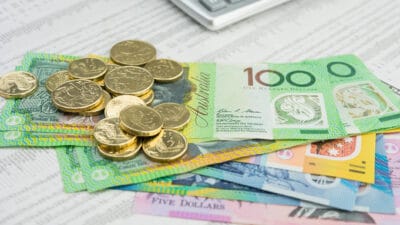ASX dividend shares can be very rewarding, capable of delivering capital growth and paying attractive cash to shareholders. There are many different ways to approach stock investing, but I think it pays to be choosy with passive income stocks.
ANZ Group Holdings Ltd (ASX: ANZ) shares may pay attractive dividends, but the ANZ share price is below its pre-GFC level. To avoid that situation, while also getting satisfactory dividends, there are some questions I'd ask myself.
Is the ASX dividend share valuation attractive?
I think it's a lot more important to make sure that the share price is a good valuation to buy at rather than focusing on the dividend yield first.
A good valuation is different for every business, and it can be determined by the forward price/earnings (P/E) ratio, the sector the company operates in, its growth prospects or its net asset value (NAV).
I'd much rather buy a business at a good price with a lower yield than buy at a bad price for a company with a higher dividend yield. I recently wrote about three ASX dividend shares that I think look good value, and I regularly cover passive income stocks I think are good value as well.
Will the next couple of years of passive income be satisfactory?
Some businesses may have paid a large dividend yield in the past 12 months, but a large cut to the payout could be coming.
Sometimes a significant share price fall can be a signal that the market thinks something is going wrong with its earnings outlook, which could then suggest a dividend cut is coming. We see this a lot in the ASX mining share sector.
When a share price falls, it boosts the prospective dividend yield, so we can still get good dividend income.
For example, if a cyclical company had a share price of $100 and paid an annual dividend per share of $5 then that would be a dividend yield of 5%. If the share price falls to $60 and the annual dividend per share is cut to $3 per share, it's still a 5% dividend yield for new investors. There's a chance to get a very good yield if the dividend recovers to $5 per share when economic conditions normalise (which would be a dividend yield of 8.3% on the cost base).
Commsec and various other brokers usually have a dividend estimate of what the ASX dividend share might pay.
Of course, there are some businesses that just keep paying bigger dividends every year, which makes it much easier to predict what's going to happen with the dividend.
Is there useful investment for growth and a healthy dividend payout ratio?
I want to see that a company has plans for how to increase its profit in the future. That could be as simple as increasing prices or opening more stores. It might mean that the ASX dividend share is looking to expand into new countries, start a new product range or make a useful acquisition.
Bigger profits can protect and grow the dividend payments for shareholders.
Part of the equation is ensuring that the business isn't paying too much of its profit (or cash flow) to investors each year. A high dividend payout ratio could mean that the company isn't re-investing enough.
A low dividend payout ratio also gives more leeway for dividend increases in the future if profit is flat one year, whereas a business already paying 100% of profit can't do much else.
What is the dividend yield of the ASX dividend share?
A company can only really be called an ASX dividend share if it offers a good dividend yield. It's up to everyone to decide what an appropriate yield is at the moment, considering term deposits now offer much better rates.
At a minimum, I think we need to look at a yield of at least 3%.
The dividend yield is a function of how expensive the shares are trading (the P/E ratio) and how much of the profit it's paying out each time (the dividend payout ratio). A higher yield isn't necessarily better.









